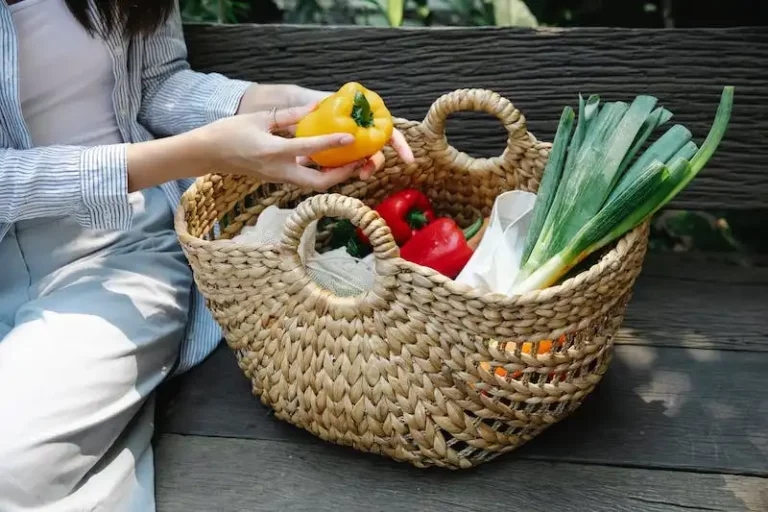If you’re a keen gardener, growing your own courgettes is a rewarding experience. Not only are they easy to grow, but they produce wonderfully versatile crops that can be used in a variety of recipes. This guide will show you how to plant and care for your courgettes, from seedling to harvest.
When it comes to planting courgettes, timing is key. They can be sown indoors early in the year and then transplanted outside when the weather conditions are right, or they can be sown directly outside when the danger of frost has passed. Either way, you’ll want to make sure your courgette plants are in a sunny spot with well-drained soil.
Before planting, prepare the soil by adding well-rotted manure or a high-quality fertiliser. This will help improve the soil’s moisture-holding capacity and provide essential nutrients for your courgettes. Sow the seeds in small pots or containers filled with seed compost, and cover them with a thin layer of compost or vermiculite. Keep the pots indoors in a warm, well-lit place until the seedlings germinate.
Once the seedlings have germinated, gradually acclimatize them to outdoor conditions by placing them outside for a few hours each day. Then, once all danger of frost has passed, you can transplant them into the ground. Make sure to space the plants about 60cm apart to allow for their sprawling foliage.
As your courgette plants grow, be sure to keep them well watered, especially during dry spells. Courgettes are thirsty plants and need plenty of moisture to produce abundant crops. You can also feed them with a liquid seaweed or tomato feed to promote healthy growth and fruit development.
To encourage healthy and productive courgette plants, regular pruning is necessary. Remove any side shoots that develop from the leaf axils, as well as any dead or yellowing leaves. This will help improve air circulation around the plants and reduce the risk of fungal diseases, such as powdery mildew.
Pests, such as slugs and snails, can also pose a threat to courgette plants. To protect your crop, you can use organic methods, such as copper tape or eggshells, or use natural predators, like birds or hedgehogs, to keep the pests at bay.
Harvest your courgettes when they are still small and tender, usually when they are about 15-20cm long. Cut the fruits from the plant using a sharp knife or secateurs, being careful not to damage the main stem or the roots. Courgettes can be stored in a cool, dry place for a few days, but they are best eaten fresh.
In conclusion, growing courgettes can be a rewarding and enjoyable experience. Whether you have a small balcony or a large garden, courgettes can be grown in pots, containers, or directly in the ground. With the right care and attention, you’ll be able to enjoy a bountiful harvest of delicious courgettes all summer long.
Remember, the key to successful courgette growing is to provide the plants with the right conditions for growth. By following this guide and applying the expert tips outlined, you can be confident in your ability to produce a bumper crop of tasty courgettes.
Best expert advice on growing courgettes
When it comes to growing courgettes, timing is key. You’ll want to start planting your seeds indoors about 4-6 weeks before the last frost date. This will give them enough time to germinate and grow into healthy seedlings.
Once the danger of frost has passed and the soil has warmed up, it’s time to transplant your courgette seedlings outside. Make sure to choose a sunny spot with well-draining soil. Courgettes are known for their large leaves, so be sure to provide enough space between each plant to allow for proper air circulation.
Courgettes are a versatile crop and can be grown in containers, raised beds, or directly in the ground. If you’re growing them in containers, make sure they have adequate drainage holes and use a good quality potting mix. Courgettes thrive in heat, so be sure to provide them with a sunny location and regular watering.
When planting your courgette seedlings, bury them deep in the soil, up to the first set of true leaves. This will encourage strong root development and help your plants establish quickly.
Courgettes are heavy feeders, so be sure to fertilize them regularly. You can use a balanced organic fertilizer or apply a liquid seaweed fertilizer every couple of weeks. This will help promote healthy growth and abundant fruit production.
Courgettes are fast-growing plants and can be harvested in as little as 8-10 weeks from planting. You’ll know they’re ready to harvest when the courgettes are about 15-20cm long. To harvest, simply cut the courgettes off the plant using a sharp knife or scissors.
One common problem with courgettes is powdery mildew, which is a fungal disease that can affect the leaves. To prevent this, make sure to water your courgette plants at the base and avoid getting the foliage wet. If you notice any leaves becoming infected, remove them immediately to prevent the spread of the disease.
If you’re looking for a variety of courgette to grow, consider the ‘Tromboncino’ variety, which is a climbing courgette that produces long, curved fruits. This variety is great for saving space in the garden and can be trained to grow up a trellis or pergola.
Whether you’re an experienced gardener or just starting out, growing courgettes is an easy and rewarding process. Just follow these expert tips and you’ll be harvesting your own delicious courgettes in no time!
Contents
- About Courgette Growing
- Choosing the Right Containers
- Sowing Courgette Seeds
- Courgette Planting Guide
- Courgette Care and Maintenance
- Harvesting Courgettes
- Courgette Growing Tips and Advice
- Courgette Recipes
- Common Courgette Growing Problems and How to Avoid Them
- Recommended Courgette Varieties
How to plant courgettes
Planting courgettes is an easy task that can be done by following these simple steps:
- Choose a suitable location for planting your courgette plants. They grow best in full sun, so find a spot in your garden that receives at least six hours of direct sunlight each day.
- Prepare the soil by loosening it with a fork or spade. Make sure to remove any weeds or rocks from the planting area.
- If you’re planting in a raised bed or container, make sure it has good drainage.
- Add compost or well-rotted manure to the soil to improve fertility and moisture retention.
- Sow the courgette seeds directly into the soil or start them indoors in pots about 2-3 weeks before the last frost date. Plant the seeds about 1 inch deep and keep the soil evenly moist for germination to occur.
- Once the seedlings have developed a few leaves, thin them out so they are spaced about 30cm (12 inches) apart. This will give the plants enough room to grow.
- Protect your courgette plants from common pests like snails by placing a barrier such as copper tape around them or using organic pest control methods.
- Courgette plants need to be watered regularly, especially during hot and dry periods. Make sure to water at the base of the plants and avoid wetting the foliage, as this can cause diseases.
- As the plants grow, they will start to produce male and female flowers. You can tell them apart by looking at the base of the flower. The female flowers have a small courgette behind the flower, while the male flowers do not.
- If you notice that your courgette plants are not producing fruit, it may be because they are not being pollinated. You can help pollinate the flowers by gently transferring pollen from the male flowers to the female flowers using a paintbrush or your finger.
- Once your courgette plants start flowering, you can also use fleece or netting to protect them from frost or to create a warmer environment for them.
- Harvest your courgettes when they are about 15-20cm (6-8 inches) long. Simply cut them off the plant using a sharp knife or pruners.
- Courgettes can be enjoyed in a variety of dishes such as stir-fries, salads, and even as a topping for pizza. They’re also great stuffed with cheese and baked.
By following this planting guide, you’ll be able to successfully grow your own courgettes and enjoy a bountiful harvest in no time!
How to grow courgettes
Growing courgettes is easy and rewarding. Follow these steps to ensure a successful harvest.
Start by choosing a suitable site to plant your courgettes. They prefer a sunny location with well-drained soil. If you have limited space, you can also grow courgettes in containers.
When sowing your courgette seeds, make sure to sow them between late spring and early summer. You can start them off indoors on a windowsill or directly sow them outside. If sowing indoors, use pots filled with compost. Once the seeds have germinated, you can then transfer them to larger containers or plant them in the ground.
While courgettes are quick to grow, they require a lot of moisture. Make sure to keep them well-watered, especially during dry periods. Regular watering is essential for healthy growth.
Feeding your courgette plants is also important. Use a balanced fertilizer or organic manure to provide them with the necessary nutrients. Apply the fertilizer around the base of the plants and water it in.
Courgette plants have large leaves that provide shade for the soil, helping to retain moisture and prevent weed growth. However, if the foliage becomes too dense, it can lead to problems with powdery mildew. To prevent this, remove some lower leaves and thin out the plant if necessary.
As the courgette plants start to flower, you may consider covering them with fleece to protect them from cold weather. This can help extend the growing season and increase your chances of a good harvest.
Harvest your courgettes when they reach a suitable size for eating. They are best picked young, around 10cm long. Simply cut them off the plant with a knife or pair of scissors.
If you’re having a bumper courgette crop and can’t eat them all at once, don’t worry. Courgettes are wonderfully versatile and can be grilled, fried, roasted, or added to various dishes. They can also be preserved by pickling or freezing for later use.
Now that you know how to grow courgettes, it’s time to get started. Whether you’re a seasoned gardener or just starting out, courgettes are a great choice for your garden. Follow these guidelines, and you’ll be enjoying your homegrown courgettes in no time.
For more information and inspiration, check out the courgette growing guides from reputable sources like Suttons and Thompson & Morgan. They have a wide range of courgette varieties suitable for all growers, including kids. Return to these guides as your plants continue to grow for more tips on care and maintenance.
With a little bit of effort and attention, you’ll soon be enjoying the delicious taste of freshly grown courgettes.




